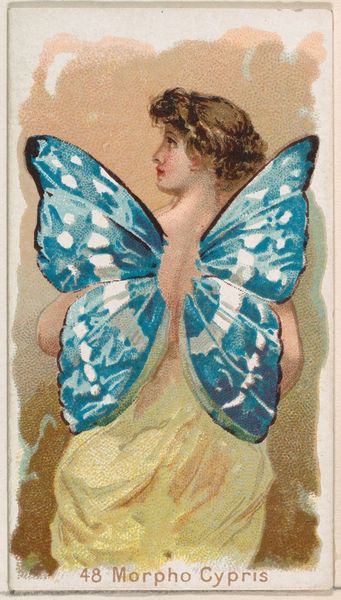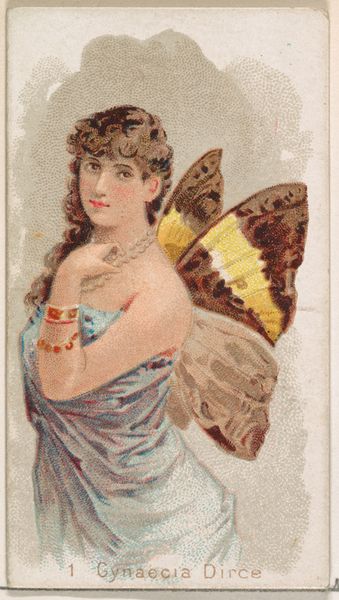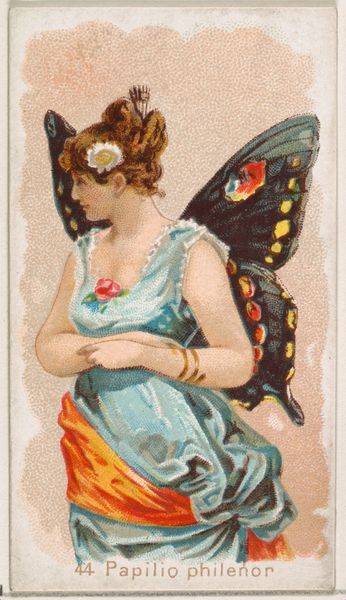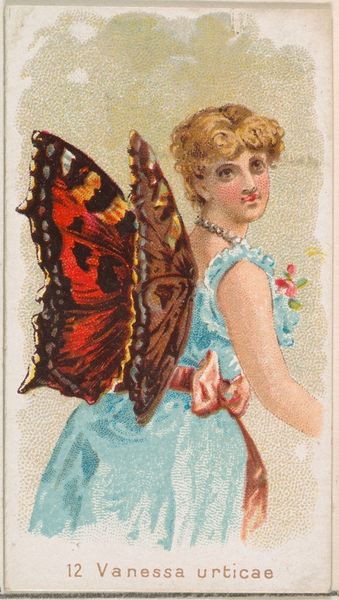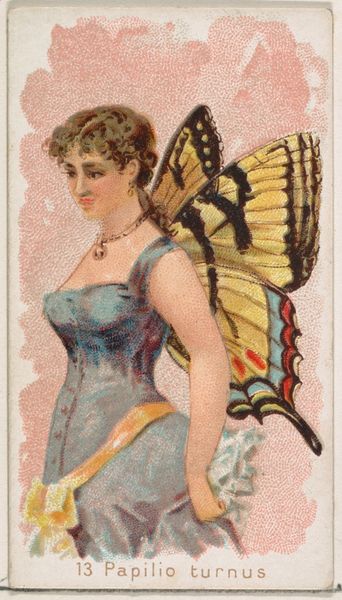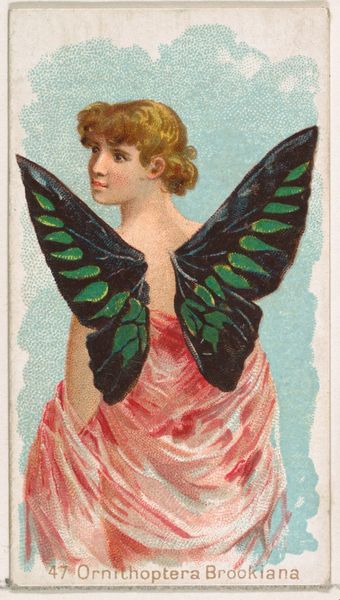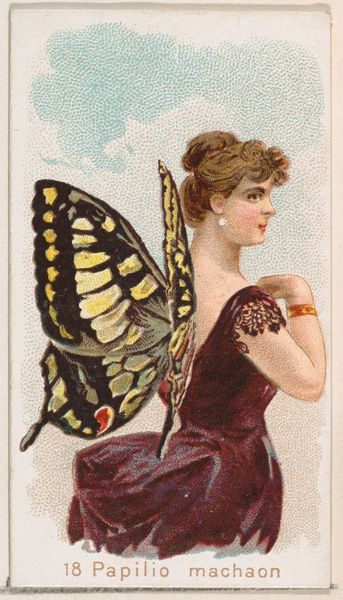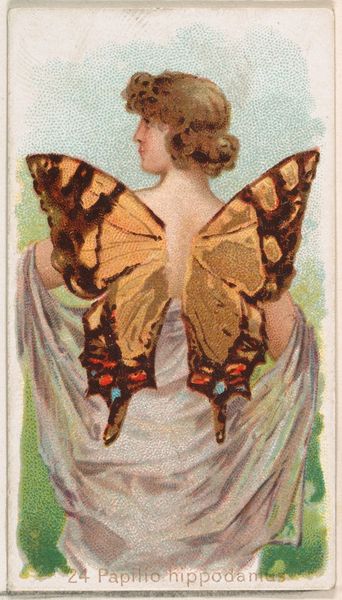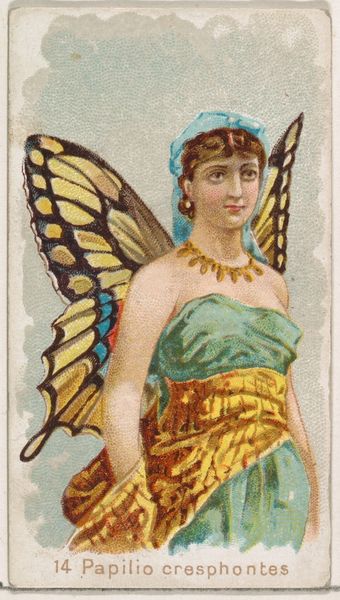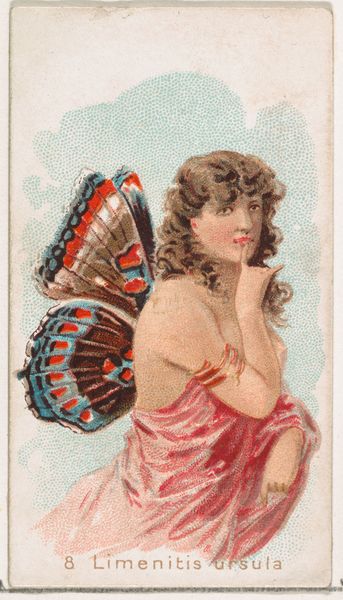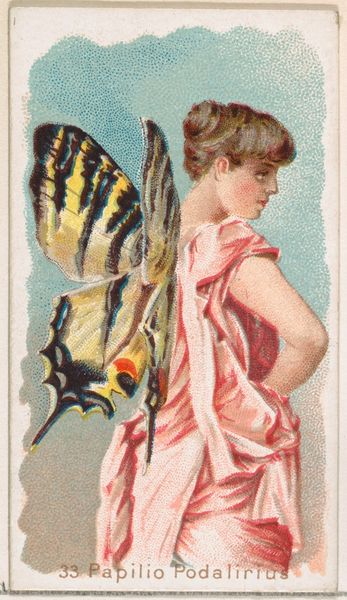
Card 2, Morpho Teucer, from the Butterflies series (N183) issued by Wm. S. Kimball & Co. 1888
0:00
0:00
drawing, print, watercolor
#
portrait
#
drawing
#
art-nouveau
#
fancy-picture
# print
#
figuration
#
watercolor
#
watercolour illustration
Dimensions: Sheet: 2 11/16 × 1 1/2 in. (6.9 × 3.8 cm)
Copyright: Public Domain
Editor: This is Card 2, Morpho Teucer, from the Butterflies series by Wm. S. Kimball & Co., dating back to 1888. It is rendered in watercolor, as a print. What I immediately notice is how delicately the artist combined human form with that of a butterfly. How do you interpret its symbolism? Curator: The butterfly, universally, is a symbol of transformation and the soul’s journey. Its metamorphosis from caterpillar to winged creature resonates deeply with themes of spiritual rebirth, beauty, and liberation. Consider also the woman's upward gaze, which speaks to aspiration, transcendence even. The figure embodies a delicate strength, a yearning for something beyond the earthly. The butterfly's association with the soul, linked here to a woman looking upward... where do you think this might lead us? Editor: I'm wondering about the specific type of butterfly used, the Morpho Teucer. Its vibrant blue might symbolize clarity, intuition, and the pursuit of knowledge. The fancy-picture style reinforces the era's fascination with beauty and its ethereal nature. It almost looks like a classical figure... Curator: Indeed, there’s an intentional callback. Consider classical depictions of Psyche, often portrayed with butterfly wings, and whose name even means “soul” in ancient Greek. This echoes in later art traditions; the symbol becomes laden with layer upon layer of meaning. Do you see echoes of past stories resonating in its image? Editor: Now I see how it builds upon this existing visual vocabulary. I had just taken it for granted at first glance as a “pretty picture," but the layers of meaning it has gives it a narrative depth. Thanks! Curator: Precisely! The cumulative effect of these symbols underscores how visual language connects us to shared cultural memories, shaping how we see, understand, and remember.
Comments
No comments
Be the first to comment and join the conversation on the ultimate creative platform.
